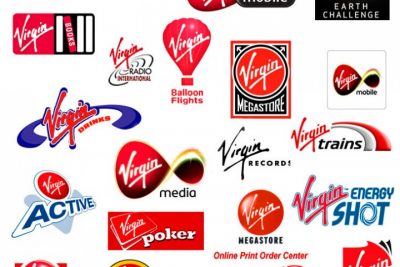It's Sunday. You are out on your monthly shopping trip to stock up on consumables. In the brief visit, you see Harley Davidson perfumes and baby clothes, Ponds toothpastes, Coca-Cola T-shirts, and Heinz detergents. You wonder if you are seeing things. Don't worry. Your eyesight is fine. What you are witnessing are classic examples of brand extensions.
Brand extension is the adding of a new product to an established line of products under the same brand name. What prompts a business to pursue this strategy? Broadly speaking, a company facing a saturated market faces 2 options - launch a new product or expand into a new market. A firm choosing the former option finds that extending the product portfolio under the same brand name offers several obvious economic benefits. The new product piggybacks on the success and recognition of the old product, leading to decreased advertising and marketing costs. The increased variety available to customers also leads to higher sales. Seems straightforward enough? It's not. There are three key things that must be kept in mind before opting for brand extension.
Firstly, the new product must convey the key attributes of the brand. When you think of Harley-Davidson, you think of adventure. So, when it launched a line of perfumes and baby clothes, the result was disastrous. Not only did the new products fail but sales of the motorcycle itself were also affected as irate customers felt alienated by the move. The new product line conveyed none of the masculine values that Harley-Davidson stood for. Harley understood its mistake and discontinued production of the unbecoming products.

Secondly, the new product must strengthen the core of the brand and not alter it. The popular Unilever beauty brand Ponds, known for face-creams and talcum powders, tried to expand into the toothpaste category. No luck. Customers perceived Ponds as a product meant for
external application only. The resulting cognitive dissonance prevented consumers from using the toothpaste. Every brand is a promise and customers are incredulous if the product delivers something different than what is expected of the brand.
Thirdly, the expansion must lie within the limits of the brand perception. Heinz, a food brand, manufactured vinegar as part of its product portfolio. It decided to increase the strength of the vinegar and market it as a cleaning agent. However, customers did not feel that a brand which manufactures eatables can develop an effective detergent. Heinz was thus unable to change the perception of the audience. As Richard Branson, CEO of Virgin Group, put it, "Brands are built around perceptions, not products". No matter how good your product actually is, it is of no use unless it is
perceived to be good.
Brands which expanded while paying heed to the trinity have been widely successful. Gillette extended its market into shaving gels. Coca-Cola launched Diet Coke. IBM moved from merely supplying computers to providing complete solutions. Another brand, however, has taken the extension to a whole new level. The Virgin Group, which embodies freedom, creativity and vigour offers everything from air travel to bridal wear. It has avoided diluting its brand by making sure that each of its products conveys the fundamental aspects of its identity to the customer.
Not all brands are suitable for extension. A company must have a deep understanding of its own offering and of the consumer's perception of its offering. Only extensions which are aligned, both in direction and in spirit, with the core values of the brand can succeed. The rest go down in marketing history and serve as yardsticks to measure just how far is too far.
- Sayali Patil
Sayali Patil – A PGP2 at IIM A, Sayali is currently pursuing her hobby of writing. She is an avid reader and likes to read fiction, non – fiction and anything other than course material. :P Passionate about social causes, she has taught under-privileged children and worked on education sector. You can follow her on InsideIIM at
sayali13.insideiim.com
Read her stories on Lessons in Leadership from Harry Potter - (Part One -
Harry Potter, Part Two -
Voldemort and Albus Dumbledore and Part Three -
Dolorus Umbridge, Hermione Granger, and Severus Snape)



